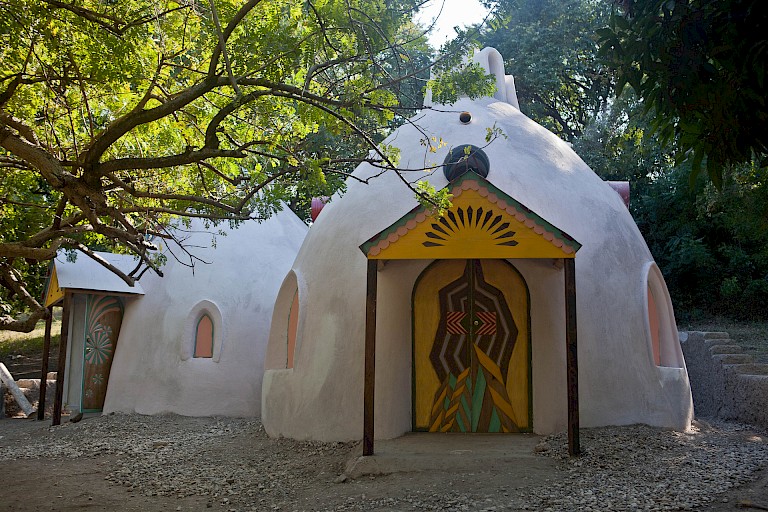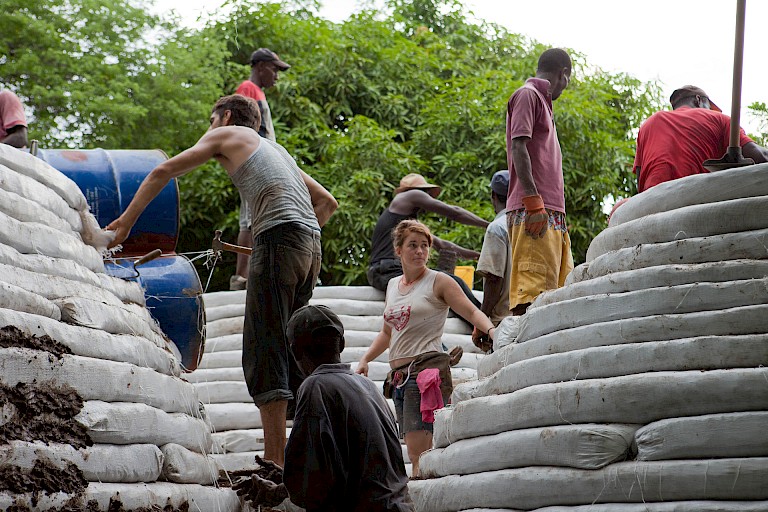



Artists Caledonia Curry, Kt Tierney, and Ben Wolf shared an interest in “how the creative process might positively impact people’s lives in times of crisis” according to the project’s website. Together, they made contact with activists in the Komye community who helped facilitate the launch of the project.
It was collectively decided that the foremost needs of the townspeople was a public community space where citizens could meet, classes could be taught, and other planning and programming could take place. Working through a collaborative process, the group designed, built, and adorned an earth-bag structure from local dirt mixed with concrete, or “Super-Adobe,” a process developed by architect Nader Khalili, one of the team of artists on the project. Since the community center was completed, the group has built two additional structures to serve as single-family homes.
Work of this sort is fraught with practical and cultural difficulties. Even well intentioned interventions from the “first” world into the “third” can call into question the role of economic development and the unequal distribution of world resources, as well as cultural power differentials. The Konbit Shelter project, while not explicitly addressing these matters in its publicity, has addressed them structurally. The group has worked collaboratively with residents from the beginning, including forming partnerships with local farm organizations and using funds raised in the United States to provide meaningful employment on the ground.
The result has been a dramatic example of creative placemaking. “The community center and houses we have constructed are also used and loved,” says Curry, adding that the project was only partly about the built environment. “The project is ongoing, and we consider its biggest success to be its relationship to Komye, as well as its ability to creatively evolve with the changing circumstances of post-earthquake Haiti.”
In its current phase, Konbit Shelter is taking up education for both children and adults, focusing on home building, architecture, and engineering. Curry says, “Our hope is to generate creative solutions and ideas within the community, and to let those ideas inform the next series of homes created in the village . . . This period is one of learning and listening, and from here we will take direction for the next steps of our work.”
Curry’s artwork has evolved from a studio-based print practice to public interventions from wheat-pasted prints on public walls to a flotilla of homemade vessels built collaboratively with other artists. She has evolved an arts/activist rationale for her work: “I think that people can pick up where governments are failing . . . I have to do it from my place of strength, which is as an artist. So even if it seems a point of departure—like now I’m interested in sustainable home building—I take that interest and bring it back to my core and say, okay, I’m an artist, I come from an artist community . . . I think like an artist, how do I achieve something unique without losing that sense of who I am?” (Art Voices Magazine).
All copyright belongs to Shanghai Academy of Fine Arts, Shanghai University.



